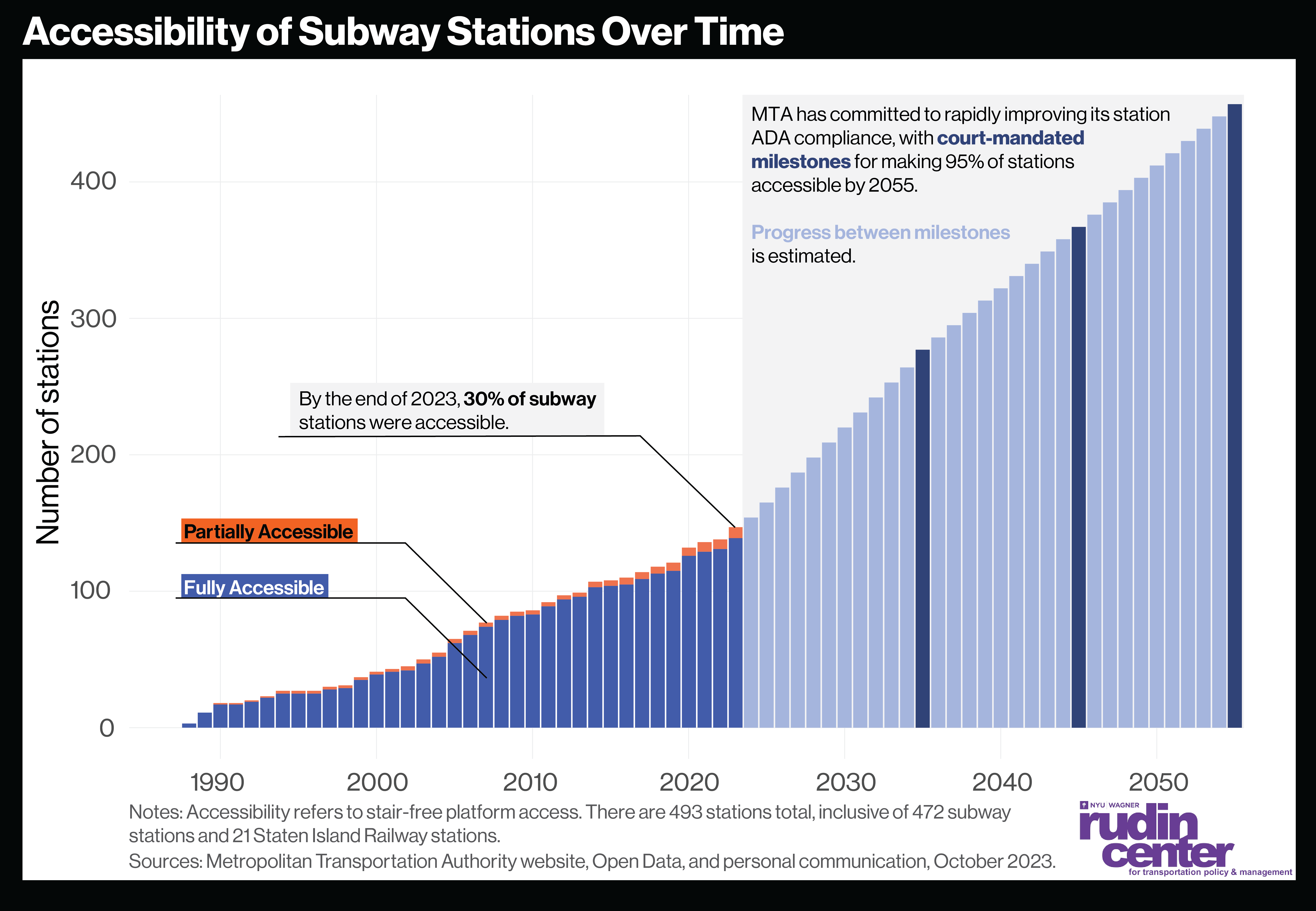Accelerating progress: Making transit accessible for all New Yorkers
The journey to make New York’s public transportation system accessible to people with disabilities and other mobility challenges is at a critical juncture. Sustaining progress hinges on crucial funding from the implementation of the Congestion Pricing plan for New York City -- as well as concrete actions that will improve public transportation for all New Yorkers.
Public transit is the lifeblood of New York City, connecting 6.1 million riders to work, school, social activities, and healthcare every day. But for more than one million New Yorkers living with disabilities -- roughly 13% of New York City’s population -- accessing public transportation poses considerable challenges.
Currently, only 30% of subway stations have elevators or ramps, significantly limiting services for those with ambulatory disabilities and other access needs.
The first subways opened in New York in the early 1900s, when the rights and needs of people with disabilities were not considered in system design. But over time, tireless efforts by the disability community, transit advocates, and other leaders have made transit access a recognized civil right -- with the 1990 enactment of and the Americans with Disabilities Act, a key milestone in this long overdue shift.
That same year, the United States Department of Justice approved the MTA’s 30-year plan to make 100 Key Stations accessible by constructing stair-free access to subway platforms. By 2022, all of these Key Stations were either accessible or under construction for accessibility.
Important as those efforts have been, they are still insufficient to meet the needs of all New Yorkers across the entire system. In 2022, the MTA entered into a landmark settlement agreement to make at least 95% of the remaining inaccessible subway stations accessible by 2055 -- increasing the pace of upgrades from 6.5 to 9.8 stations per year. This settlement builds on the MTA’s commitment in 2019 to allocate $5.2 billion in its 2020-2024 Capital Program for accessibility upgrades at nearly additional 70 stations.
To fulfill the terms of this historic settlement and build a fully accessible public transportation for all New Yorkers, the MTA must accelerate the pace of progress by 51%.
As this report shows, despite the MTA’s progress, significant obstacles to achieving these ambitious accessibility goals remain, including aging infrastructure, limited physical space, and the high cost of construction in New York City.
As a matter of first priority, the MTA and political leaders must ensure adequate capital funding levels commensurate with the increased pace of required ADA upgrades for current and future capital programs.
Most urgently, the MTA’s ability to deliver the remaining accessible stations it has committed to hinges on the $15 billion in capital funding to be made available by the implementation of Congestion Pricing.
The report also strongly recommends that the MTA:
- Implement additional cost containment measures;
- Bolster infrastructure monitoring;
- Improve the geographic distribution of accessible stations;
- Broaden public engagement, and
- Leverage existing and emerging technologies for real-time data.
Overcoming historic underinvestment, the MTA has begun delivering more rapidly on its commitment to transit accessibility. Increasing this momentum is imperative: the pace of progress directly impacts the lives and futures of millions of New Yorkers.
